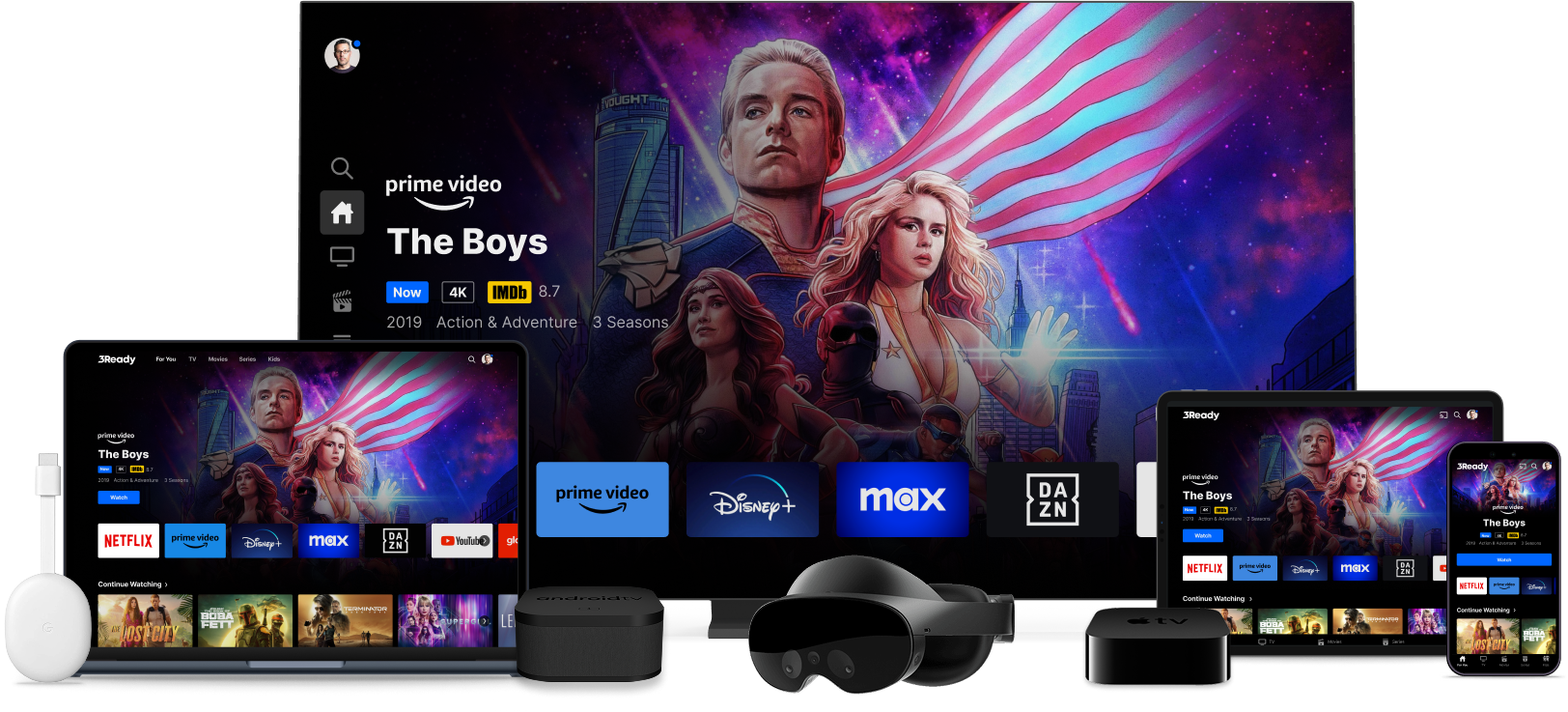Meet Us at CES 2026 | Jan 6-9
Book a meeting

For years, Pay TV strategies have focused on expanding content libraries and adding new features, always trying to play catch-up with Netflix. Yet growing evidence shows that the real barrier to growth isn’t the content or how many new features are included; it’s the usability and inclusivity of the experience. In short, the true differentiator lies in how effortlessly viewers can go from searching to watching something great.
Research from Ofcom and DTG in the UK highlights that cluttered menus, inconsistent layouts, and poor navigation alienate users, particularly older audiences. In trials, simplifying interfaces reduced usability barriers by nearly 50%.
This challenge extends globally. Mature markets face stagnation, while emerging regions, especially Latin America and APAC, are growing fast. In Latam, for example, the media and entertainment sector is expected to expand by around 9.4% in 2025 to reach USD 55 billion, driven by the rise of hybrid Pay TV and streaming adoption. Meanwhile, in Europe, North America, and Japan, where over 60% of TV viewers are aged 50 or older (Ofcom, 2024), accessibility and intuitive design are now critical for retention.
For operators, this means designing adaptive interfaces that flex to different audiences’ needs, simplifying discovery and navigation for less digitally confident users, while still offering the personalization and control younger viewers expect. An adaptive UX not only bridges the generational gap but ensures that every viewer, regardless of age or ability, can enjoy a frictionless experience.
Bridging the Accessibility Gap
Despite massive growth potential, inclusivity often remains overlooked beyond adhering to local accessibility requirements. Many Pay TV and streaming interfaces still frustrate users with complex flows, inconsistent navigation, and poor readability limiting engagement, annoying users and driving churn.
Inclusive design isn’t just about accessibility compliance. It’s a proven growth strategy that goes further. It means creating adaptive, human-centered experiences that anticipate different needs, from adjustable text and contrast to simplified “easy mode” navigation and voice-based discovery. It’s about designing for everyone, from first-time users to advanced streamers.
Operators that prioritize intuitive UX gain a measurable competitive advantage, particularly in markets where Pay TV and streaming services coexist. In Latin America, for instance, several operators now promote “easy mode” interfaces and simplified navigation as key differentiators; European leaders such as Vodafone and Allente are proving that accessibility-focused UX also scales to premium, multi-device environments.
The Business Case for Inclusive UX
Accessibility isn’t just a regulatory checkbox, it's a strategic lever that turns good usability into measurable business value. Design improvements that prioritize inclusivity make experiences faster, clearer, and more enjoyable for everyone.
Inclusive UX delivers measurable results:
Accessibility is a strategic lever that transforms usability into measurable business value, helping operators build stronger engagement, loyalty, and long-term growth, especially as Pay TV evolves alongside OTT and new device ecosystems.
3Ready: Enabling Inclusive Pay TV Globally
At 3SS, inclusivity is built into the design of our 3Ready platform a proven framework that helps operators deliver personalized, intuitive, and monetizable experiences across devices and regions.
Operators such as Vodafone use 3Ready to streamline navigation and unify UX across geographical markets, while Allente employs adaptive layouts and end user hints to simplify onboarding and make discovery more intuitive for all users.
Conclusion
Inclusive, intuitive design is the growth engine for Pay TV’s next chapter. By simplifying experiences and making them accessible to all, operators can boost engagement, reduce churn, and unlock sustainable revenue.
In a market defined by choice, the most inclusive experiences will be the ones viewers choose to stay with.


